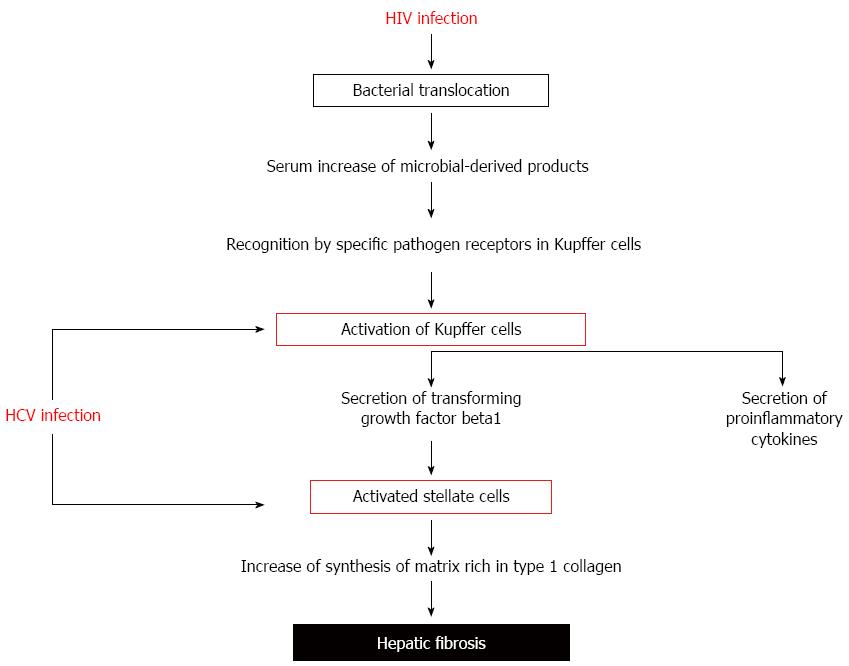Copyright
©The Author(s) 2016.
World J Gastroenterol. Jan 28, 2016; 22(4): 1433-1448
Published online Jan 28, 2016. doi: 10.3748/wjg.v22.i4.1433
Published online Jan 28, 2016. doi: 10.3748/wjg.v22.i4.1433
Figure 2 Increased fibrogenesis rate in human immunodeficiency virus-hepatitis C virus coinfected patients.
In human immunodeficiency virus (HIV)-hepatitis C virus (HCV) coinfection, translocated bacterial products contribute to liver disease progression by binding to specific pathogen recognition receptors in Kupffer cells. Activated Kupffer cells secrete proinflammatory cytokines and transforming growth factor β1. Activated stellate cells, stimulated by transforming growth factor β1, produce a matrix rich in type 1 collagen, increasing the effect of HCV on hepatic fibrosis.
- Citation: Márquez M, Fernández Gutiérrez del Álamo C, Girón-González JA. Gut epithelial barrier dysfunction in human immunodeficiency virus-hepatitis C virus coinfected patients: Influence on innate and acquired immunity. World J Gastroenterol 2016; 22(4): 1433-1448
- URL: https://www.wjgnet.com/1007-9327/full/v22/i4/1433.htm
- DOI: https://dx.doi.org/10.3748/wjg.v22.i4.1433









